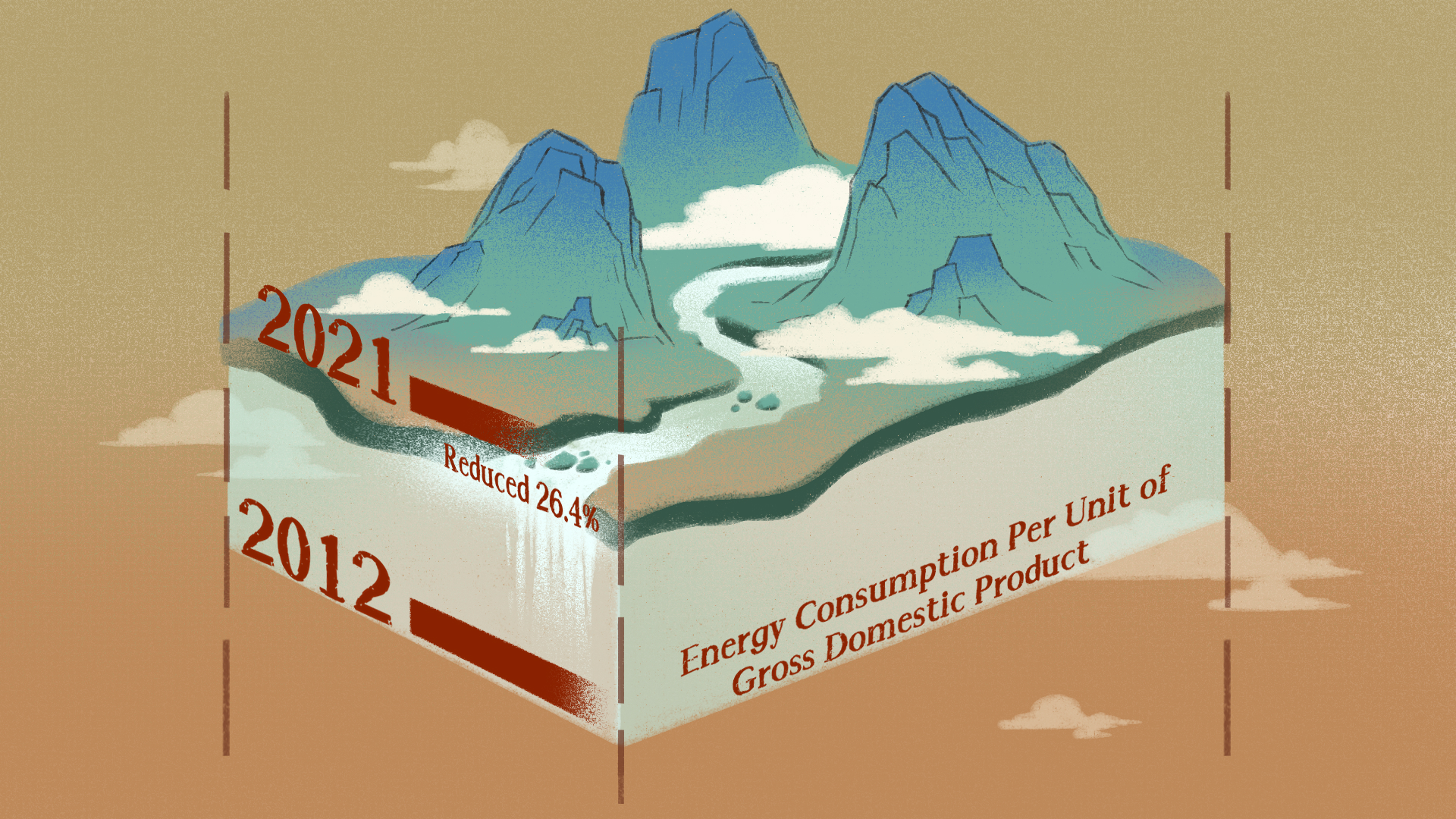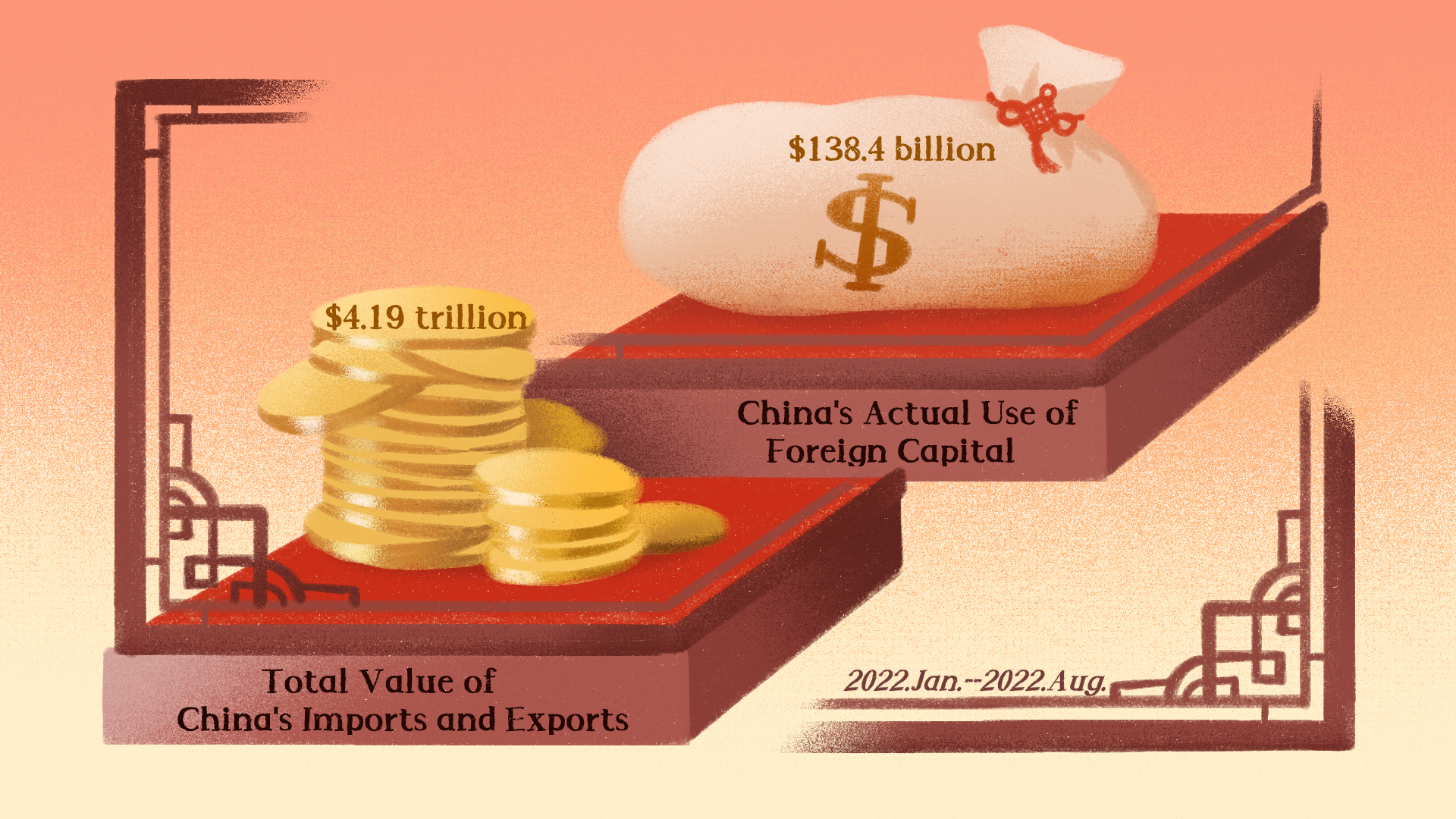作者:黄群慧(中国社会科学院经济研究所所长)
汤铎铎(中国社会科学院经济研究所)
来源:《CGTN网站》2022年10月31日
A resilient Chinese economy supports the Chinese path to modernization
Huang Qunhui, Tang Duoduo
(CGTN,opinion 10:50,31-oct-2022)

Editor's note:
China has clearly demonstrated its development blueprint for the next five years at the 20th National Congress of Communist Party of China held in October, 2022. To further elucidate the plan to the world, CGTN has created the "China Blueprint: Opportunities for the World" series. This is the fourth piece focusing on Chinese path to modernization.
Since the 18th Communist Party of China (CPC) National Congress in 2012, socialism with Chinese characteristics has entered a new era. In the first decade of the new era, China has proposed and applied the new development philosophy and focused on promoting high-quality development. In this process, China has seen historic rise in economic strength. China's success in high-quality economic development underpins and widens the Chinese path to modernization, and puts China on a new journey of building a modern socialist country in all respects.
Economic achievements that will go down in history as a success story
China's economy grew from 54 trillion Chinese yuan (about $7.39 trillion) in 2012 to 114 trillion yuan (about $15.6 trillion) in 2021, with its share of the world economy rising from 11.3 percent to 18.5 percent. China's GDP per capita rose from $6,300 to over $12,000, surpassing the world's GDP per capita. As the world's top manufacturing powerhouse, the added value of China's manufacturing industry increased from 17 trillion yuan (about $2.33 trillion) to 31.4 trillion yuan (about $4.3 trillion), rising to nearly 30 percent of the world's total from 22.5 percent.
From 2017 to 2021, China maintained its position as the world's top trading country in goods for five consecutive years. Over the past decade, China has won the largest battle against poverty in human history, with all 832 poverty-stricken counties in China being lifted out of poverty. Nearly 100 million rural poor people by current standards have walked out of poverty, and more than 9.6 million poor people have been relocated to easy-to-reach areas. China has made historic achievements in solving the problem of absolute poverty, making significant contributions to global poverty reduction.
Achieving high-quality development of China's economy
In the first decade of the new era, China has fully and faithfully applied the new development philosophy on all fronts and made efforts to promote high-quality economic development. With innovation as the primary driving force for development and extensive measures taken for implementing the innovation-driven development strategy, new achievements have been made in innovation-driven development, and major progress has been made in building an innovative country. According to the World Intellectual Property Organization (WIPO) Global Innovation Index 2021, China climbed to 12th place in 2021 from 34th in 2012.
China adheres to the concept that lucid waters and lush mountains are invaluable assets. Building a beautiful China has become a major national policy, with historic changes in environmental protection endeavors. In 2021, China's energy consumption per unit of gross domestic product (GDP) was 26.4 percent lower than in 2012, with an average annual decline of 3.3 percent. China also attaches great importance to the concept of shared development, so that the fruits of development can benefit all people in a fairer way. By eliminating absolute poverty, China has built a moderately prosperous society in all respects and improved the lives of the Chinese people on all fronts.

Building a resilient economic system
In an increasingly fluid and changing world, China's economic development in the new era has experienced frequent external shocks. In the aftermath of the 2008 global financial crisis, a series of major events such as the China-U.S. trade frictions that began in 2018, the outbreak of COVID-19 pandemic in 2020 that continues to this day, and the Russia-Ukraine conflict in 2022 have caused new and sustained shocks to the Chinese economy. Nevertheless, in the face of rising uncertainties caused by frequent external shocks, China's economy has demonstrated strong resilience, thanks to its complete industrial systems, abundant human resources, convenient infrastructures, strong domestic market and massive market dynamism, thereby providing a strong impetus to world economic growth.
From 2013 to 2021, China's average contribution to global economic growth exceeds 30 percent, ranking first across the world. Despite the pandemic impact, China's economy has continued to show strong resilience and dynamism. The year 2020 saw China's GDP grow by 2.3 percent, making it the only major economy in the world to achieve positive growth under the pandemic. China's GDP grew by 8.1 percent in 2021, continuing to be among the best-performing major economies.
Even amid global economic slowdown and subdued recovery this year, China's economy remains a bright spot. On top of last year's high growth rate of 30 percent, China's foreign trade has also seen considerable increase this year. In U.S. dollar terms, from January to August this year, the total value of China's imports and exports was $4.19 trillion, up 9.5 percent year-on-year (YoY); China's actual use of foreign capital reached $138.4 billion, up 20.2 percent YoY. This is a good indication that foreign investors continue to be bullish on the Chinese market. With the support of a resilient economic system, the fundamentals sustaining China's long-term sound development will stay unchanged.

In his report to the 20th CPC National Congress, Xi Jinping, general secretary of the CPC Central Committee, pointed out that the essential elements of the Chinese path to modernization include socialism with Chinese characteristics, pursuing high-quality development, and achieving common prosperity for all.
China's admirable practice of high-quality economic development has been underpinning and widening the Chinese path to modernization. With its two major miracles of rapid economic development and long-term social stability, China has proved to the world that it has successfully carved out a path to modernization. This path is opened based on China's national realities and will go down in history as a right choice made for the people. It embodies the confidence of the Chinese people in embarking on the path to socialist modernization, and it also testifies to the theoretical and practical wisdom accumulated by the Chinese people for realizing the great rejuvenation of the Chinese nation.
(Contributed by Huang Qunhui, research fellow and director of the Institute of Economics at the Chinese Academy of Social Sciences; Tang Duoduo, research fellow and head of Macroeconomics Section of the Institute of Economics at the Chinese Academy of Social Sciences.)
有韧性的经济支撑中国走向现代化
编者按:
在2022年10月召开的中国共产党第二十次全国代表大会上,中国明确展示了未来五年的发展蓝图。为了向世界进一步阐明这一计划,中国国际电视台制作了“中国蓝图:世界的机遇”系列节目。这是聚焦中国现代化道路的第四篇文章。
从2012年中国共产党第十八次代表大会开始,中国特色社会主义进入新时代。新时代10年提出并贯彻新发展理念,着力推进高质量发展,推动构建新发展格局,实施供给侧结构性改革,制定一系列具有全局性意义的区域重大战略,中国经济实力实现历史性跃升,以经济高质量发展成功推进和拓展了中国式现代化,推动中国迈上全面建设社会主义现代化国家新征程。
取得标榜史册的经济建设成就
中国经济从2012年的54万亿元人民币(约7.39万亿美元)增长到2021年的114万亿元人民币(约15.6万亿美元),占世界经济的比重从11.3%上升到18.5%。人均国内生产总值从6300美元上升到12000多美元,超过世界人均国内生产总值。作为世界第一制造业大国,中国制造业增加值从17万亿元(约2.33万亿美元)增加到31.4万亿元(约4.3万亿美元),占世界总量的比例从22.5%上升到近30%。
2017年至2021年,中国连续五年保持全球货物贸易第一大国的地位。10年间,中国打赢了人类历史上规模最大的脱贫攻坚战,全国832个贫困县全部摘帽,现行标准下近1亿农村贫困人口实现脱贫,960多万贫困人口实现易地搬迁,历史性地解决了绝对贫困问题,为全球减贫事业作出了重大贡献。
实现中国经济的高质量发展
新时代的10年里,中国全面贯彻新发展理念,着力推进经济高质量发展。将创新作为引领发展的第一动力,深入实施创新驱动战略,创新发展取得新成效,创新型国家建设取得重大进步。世界知识产权组织(WIPO)《2021年全球创新指数报告》显示,2021年中国排名第12位,十年上升了22位;坚持以推进供给侧结构性改革作为经济工作主线,深入实施区域协调发展战略、乡村振兴战略、以人为和核心的新型城镇化战略等一系列重大战略举措,中国经济的产业发展协同性、区域发展协调性、城乡发展协调性都得到了进一步提升;坚持绿水青山就是金山银山的理念,美丽中国建设成为重大国策,生态环境保护发生历史性、转折性、全局性变化,2012年到2021年,我国单位GDP能耗下降了26.4%;高度重视共享发展理念,让发展成果更多更公平惠及全体人民,消除了绝对贫困现象,全面建成了小康社会,中国人民实现全方位生活改善。建成世界上规模最大的教育体系、社会保障体系、医疗卫生体系,人民群众获得感、幸福感、安全感更加充实、更有保障、更可持续。
形成富有韧性的经济体系
全球经济社会进入新的动荡变革期,新时代中国经济发展经受了频繁爆发的外部冲击。2008年全球金融危机余波未了,2018年开始的中美贸易摩擦、2020年爆发持续至今的新冠肺炎疫情和2022年俄乌冲突等一系列重大事件又对中国经济造成新的持续冲击。但在外部冲击频发导致的不确定性上升的情况下,中国经济体系以完整的产业体系、丰富的人力资源、便利的基础设施、强大的国内市场、澎湃的市场活力,彰显出十足的韧性,为世界经济增长贡献强大的动力。
2013年至2021年,中国对世界经济增长的平均贡献率超过30%,位居全球第一。面对新冠疫情冲击,中国经济持续展现出强大的韧性和活力。2020年中国GDP增长2.3%,成为疫情下全球唯一实现正增长的主要经济体。2021年中国GDP增长8.1%,在主要经济体中继续名列前茅。即使在今年全球经济增长疲弱、复苏受挫的同时,中国经济依然有亮点纷呈。在去年30%高增速的基础上,中国对外贸易今年也取得了可观增长。按美元计价,今年1-8月份,我国进出口总值4.19万亿美元,增长9.5%,中国实际使用外资1384亿美元,增长20.2%。这充分表明,外国投资者持续看好中国市场。在富有韧性的经济体系支撑下,中国经济发展长期向好的局面不会改变。
习近平总书记在二十大报告中指出,中国式现代化是人口规模巨大的现代化,是全体人民共同富裕的现代化,是物质文明和精神文明相协调的现代化,是人与自然和谐共生的现代化,是走和平发展道路的现代化。
中国经济高质量发展的卓越实践,支撑和拓宽了中国的现代化道路。中国创造了经济快速发展和社会长期稳定两大奇迹,向世界证明了中国成功地开辟了现代化道路。这条道路是根据中国国情开辟的,是人民作出的正确选择,必将载入史册。这体现了中国人民走社会主义现代化道路的自信,也体现了中国人民为实现中华民族伟大复兴所积累的理论和实践智慧。
黄群慧,中国社会科学院经济研究所所长、研究员,中国社会科学院大学经济学院院长、特聘教授、博士生导师。
汤铎铎,中国社会科学院经济研究所宏观经济学研究室主任、研究员,中国社会科学院大学经济学院教授、博士生导师。
(编辑:熊晨玮;审校:张佶烨)

